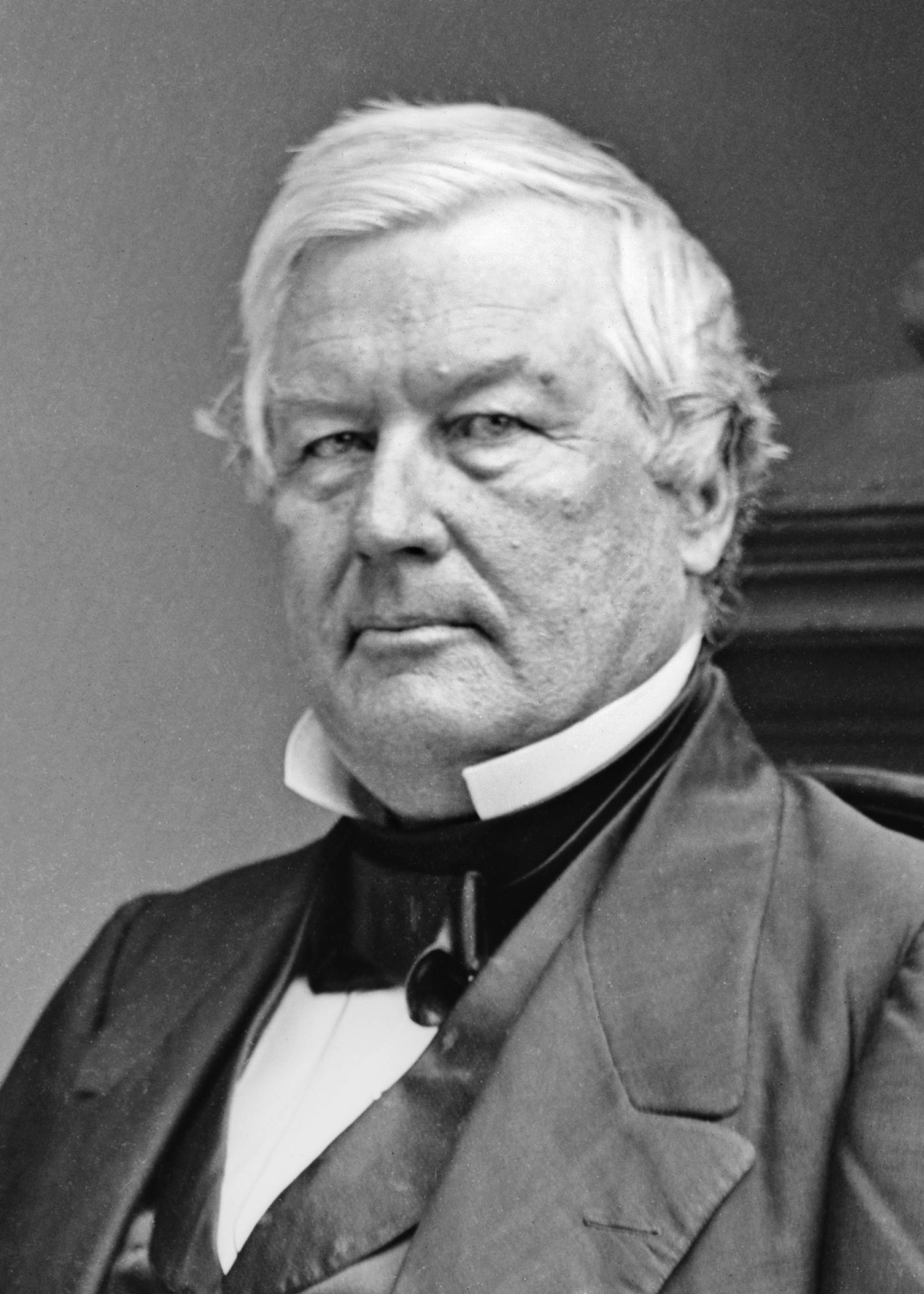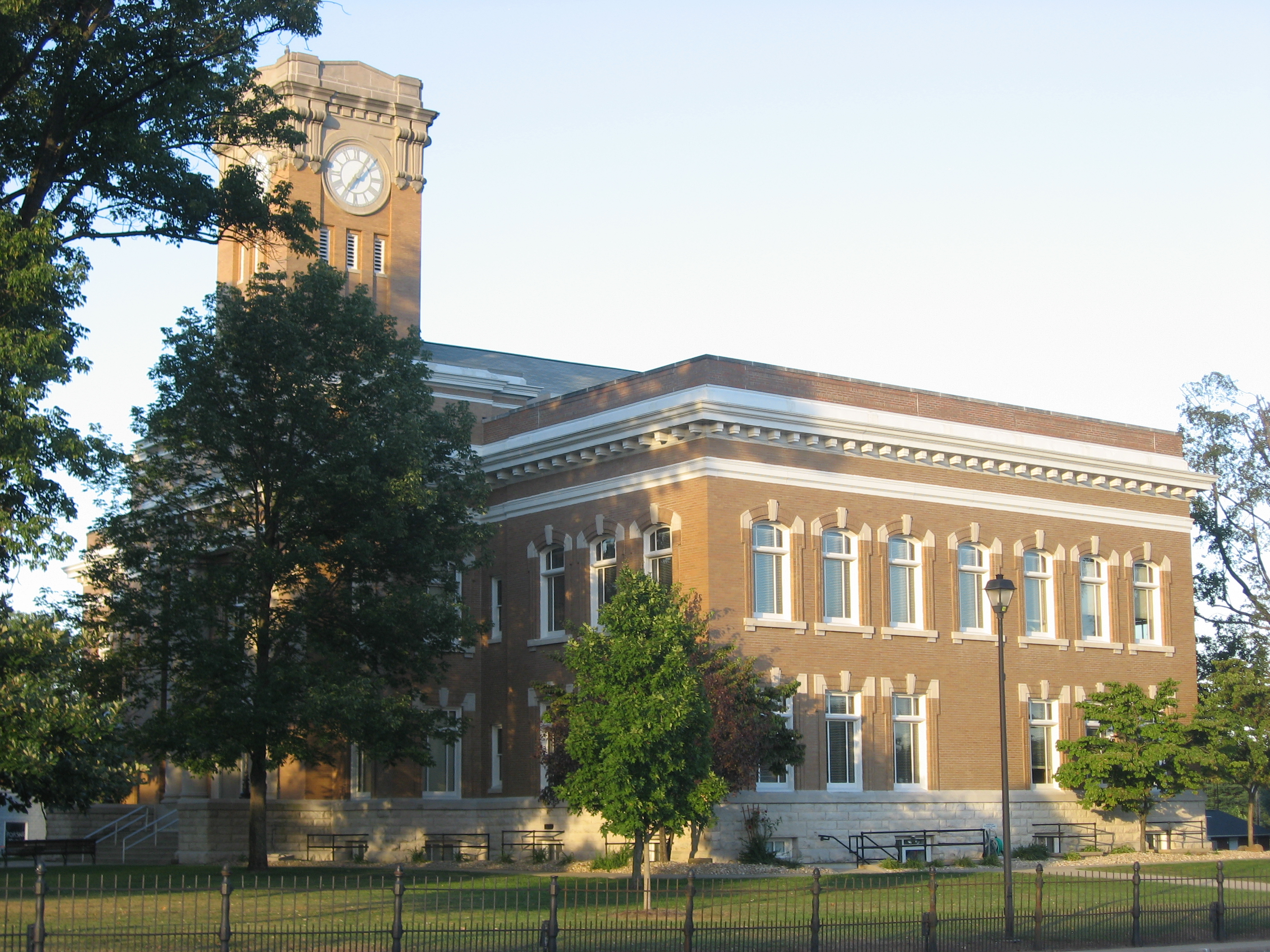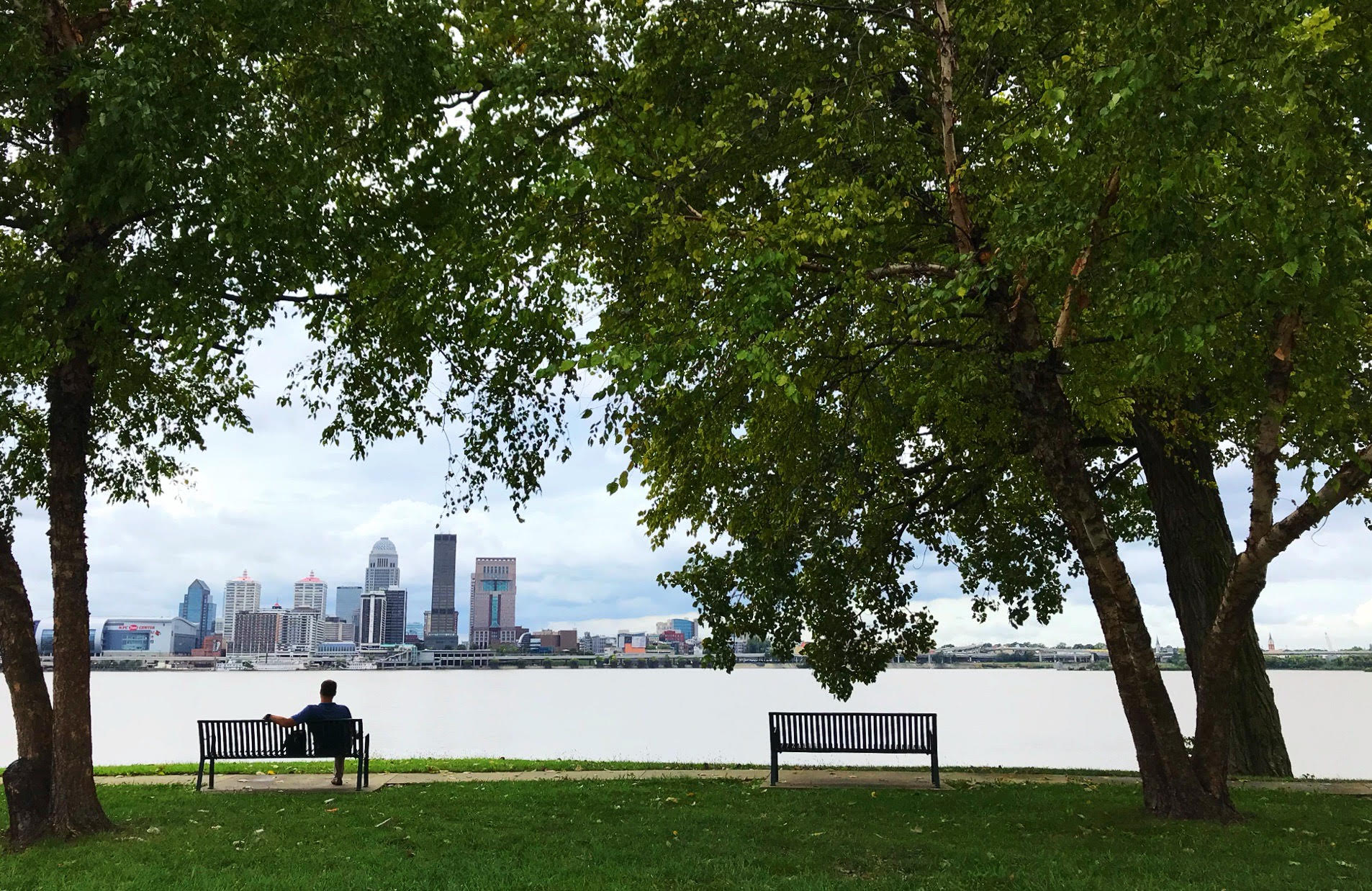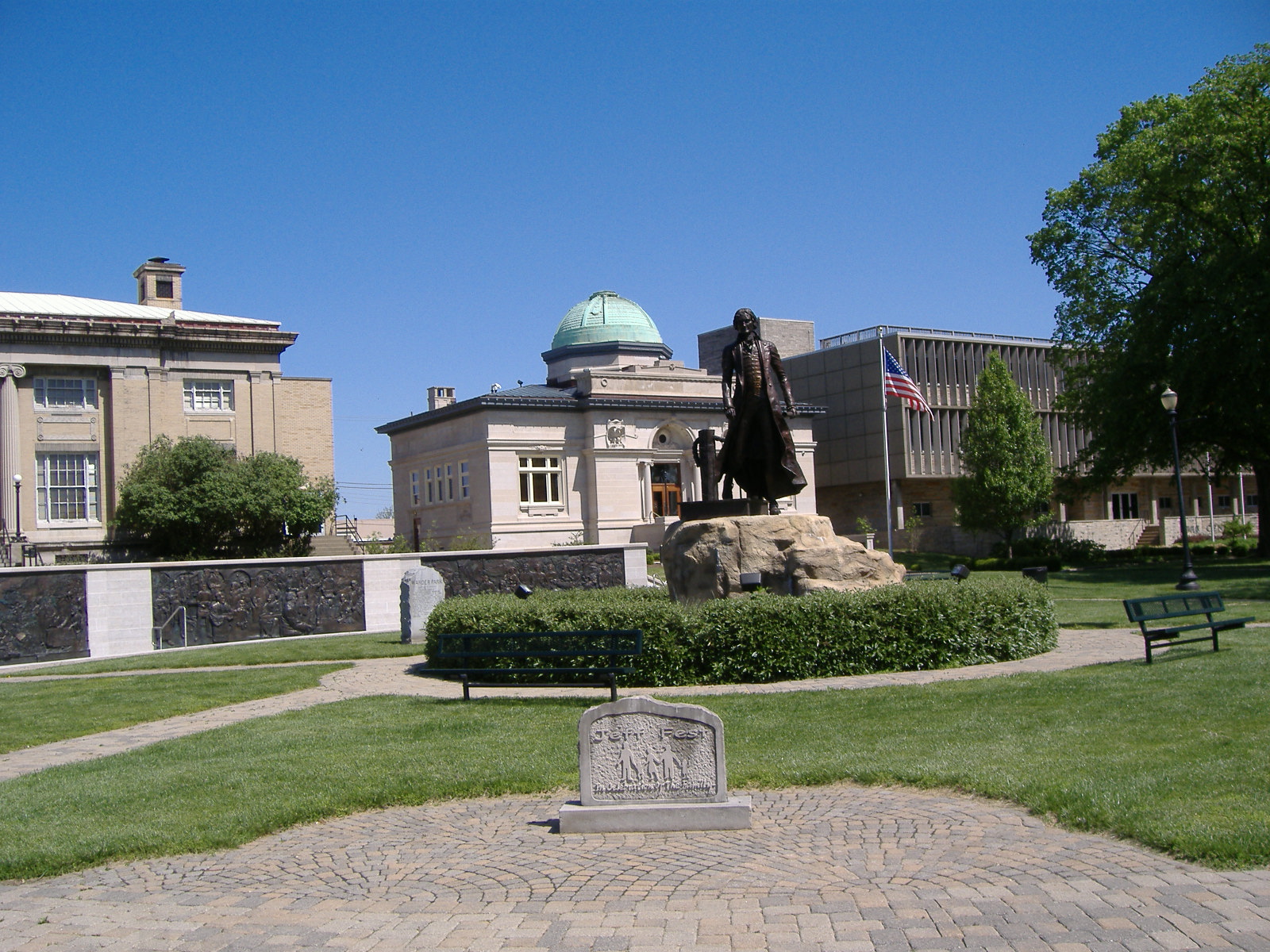|
Cyrus L. Dunham
Cyrus Livingston Dunham (January 16, 1817 – November 21, 1877) was an attorney, soldier, and prominent Indiana politician, serving most notably as a U.S. Representative from Indiana from 1849 to 1855. Biography Born in Dryden, New York in 1817, Dunham attended public schools, and eventually taught school. After earning a law degree and being admitted to the Bar, he moved to Salem, Indiana in 1841 and began practicing law. Dunham was elected prosecuting attorney of Washington County, Indiana in 1845 and then served as a member of the Indiana State House of Representatives for one term from 1846 to 1847. Dunham then successfully ran for Congress, being elected to the Thirty-first, Thirty-second, and Thirty-third Congresses (March 4, 1849 – March 3, 1855) as a Democrat. He served as Chairman of the Committee on Roads and Canals during the Thirty-third Congress. After his time in Congress, he was appointed by Governor Ashbel P. Willard as Secretary of State of Indiana, serv ... [...More Info...] [...Related Items...] OR: [Wikipedia] [Google] [Baidu] |
Indiana
Indiana () is a U.S. state in the Midwestern United States. It is the 38th-largest by area and the 17th-most populous of the 50 States. Its capital and largest city is Indianapolis. Indiana was admitted to the United States as the 19th state on December 11, 1816. It is bordered by Lake Michigan to the northwest, Michigan to the north, Ohio to the east, the Ohio River and Kentucky to the south and southeast, and the Wabash River and Illinois to the west. Various indigenous peoples inhabited what would become Indiana for thousands of years, some of whom the U.S. government expelled between 1800 and 1836. Indiana received its name because the state was largely possessed by native tribes even after it was granted statehood. Since then, settlement patterns in Indiana have reflected regional cultural segmentation present in the Eastern United States; the state's northernmost tier was settled primarily by people from New England and New York, Central Indiana by migrants fro ... [...More Info...] [...Related Items...] OR: [Wikipedia] [Google] [Baidu] |
31st United States Congress
The 31st United States Congress was a meeting of the legislative branch of the United States federal government, consisting of the United States Senate and the United States House of Representatives. It met in Washington, D.C. from March 4, 1849, to March 4, 1851, during the 16 months of the Zachary Taylor presidency and the first eight months of the administration of Millard Fillmore's. The apportionment of seats in this House of Representatives was based on the Sixth Census of the United States in 1840. The Senate had a Democratic majority, while there was a Democratic plurality in the House. Major events * March 4, 1849: Zachary Taylor became President of the United States * June, 1849: Relations with France broke down as the French ambassador Guillaume-Tell de La Vallée Poussin engaged in "insulting and confrontational" behavior towards President Taylor, shortly after this a row erupted with France over reparations which France owed the United States. The President of F ... [...More Info...] [...Related Items...] OR: [Wikipedia] [Google] [Baidu] |
Brownstown, Indiana
Brownstown is a town within Brownstown Township and the county seat of Jackson County, Indiana, United States. The population was 2,947 at the 2010 census. It was named for Jacob Brown, a general of the War of 1812. History The town of Brownstown was platted on 8 April 1816, notably prior to the statehood of Indiana itself. Brownstown became the county seat of Jackson County in November 1816, replacing Fort Vallonia, which had only been the county seat since June of that year. The land for the Jackson County Court House, which rests in the heart of Brownstown on the square, was donated by Col. John Ketcham (1782–1865) for this specific function. The Jackson County Courthouse was listed on the National Register of Historic Places in 2011. Geography Brownstown is located at (38.879823, -86.046163). According to the 2010 census, Brownstown has a total area of , of which (or 99.38%) is land and (or 0.63%) is water. Brownstown lies on the East Fork of the White River, bor ... [...More Info...] [...Related Items...] OR: [Wikipedia] [Google] [Baidu] |
Reno Gang
The Reno Gang, also known as the Reno Brothers Gang and The Jackson Thieves, were a group of criminals that operated in the Midwestern United States during and just after the American Civil War. Though short-lived, the gang carried out the first three peacetime train robberies in U.S. history. Most of the stolen money was never recovered. The gang was broken up by the lynchings of ten of its members by vigilante mobs in 1868. The murders created an international diplomatic incident with Canada and Great Britain, a general public uproar, and international newspaper coverage. No one was ever identified or prosecuted for the lynchings. The Reno Brothers have been portrayed in at least three films, including Elvis Presley's film debut in '' Love Me Tender'' (1956), in which he starred as Clint Reno, and ''Rage at Dawn'' (1955), featuring Randolph Scott. Family and early life J. Wilkison (also known as Wilkinson or Wilkerson) Reno moved to Indiana in 1813 from the Salt River reg ... [...More Info...] [...Related Items...] OR: [Wikipedia] [Google] [Baidu] |
Clark County, Indiana
Clark County is a county in the U.S. state of Indiana, located directly across the Ohio River from Louisville, Kentucky. At the 2020 census, the population was 121,093. The county seat is Jeffersonville. Clark County is part of the Louisville/Jefferson County, KY–IN Metropolitan Statistical Area. History Clark County lies on the north bank of the Ohio River. A significant gateway to the state of Indiana, Clark County's settlement began in 1783. The state of Virginia rewarded General George Rogers Clark and his regiment for their victorious capture of Forts Kaskaskia, Cahokia, and Vincennes from the British, by granting them of land. A small portion of this land, , became known as Clarksville, the first authorized American settlement in the Northwest Territory, founded the next year in 1784. Clark County Genealogical Records (accessed 21 January ... [...More Info...] [...Related Items...] OR: [Wikipedia] [Google] [Baidu] |
Jeffersonville, Indiana
Jeffersonville is a city and the county seat of Clark County, Indiana, Clark County, Indiana, United States, situated along the Ohio River. Locally, the city is often referred to by the abbreviated name Jeff. It lies directly across the Ohio River to the north of Louisville, Kentucky, along Interstate 65 in Kentucky, I-65. The population was 49,447 at the 2020 United States census, 2020 census. Jeffersonville began its existence as a settlement around Fort Finney after 1786 and was named after Thomas Jefferson in 1801, the year he took office. History 18th century Pre-founding The foundation for what would become Jeffersonville began in 1786 when Fort Finney was established near where the John F. Kennedy Memorial Bridge, Kennedy Bridge is today. United States Army, U.S. Army planners chose the location for its view of a nearby bend in the Ohio River, which offered a strategic advantage in the protection of settlers from Native Americans in the United States, Native America ... [...More Info...] [...Related Items...] OR: [Wikipedia] [Google] [Baidu] |
50th Indiana Infantry Regiment
The 50th Regiment Indiana Infantry was an infantry regiment that served in the Union Army during the American Civil War. Service The 50th Indiana Infantry was organized at Seymour, Indiana and mustered in for a three-year enlistment on September 12, 1861. The regiment was attached to 15th Brigade, 4th Division, Army of the Ohio, to June 1862. Unassigned Railroad Guard, Army of the Ohio, to September 1862. District of Louisville, Kentucky, Department of the Ohio, to November 1862. District of Jackson, Tennessee, XIII Corps, Department of the Tennessee, to December 1862. 2nd Brigade, District of Jackson, Tennessee, XVI Corps, to March 1863. 2nd Brigade, 3rd Division, XVI Corps, to August 1863. True's Brigade, Arkansas Expedition, to January 1864. Unassigned, 2nd Division, VII Corps, Department of Arkansas, to April 1864. 1st Brigade, 3rd Division, VII Corps, to May 1864. 1st Brigade, 1st Division, VII Corps, to February 1865. 2nd Brigade, 3rd Division, XIII Corps, Military ... [...More Info...] [...Related Items...] OR: [Wikipedia] [Google] [Baidu] |
Colonel
Colonel (abbreviated as Col., Col or COL) is a senior military officer rank used in many countries. It is also used in some police forces and paramilitary organizations. In the 17th, 18th and 19th centuries, a colonel was typically in charge of a regiment in an army. Modern usage varies greatly, and in some cases, the term is used as an honorific title that may have no direct relationship to military service. The rank of colonel is typically above the rank of lieutenant colonel. The rank above colonel is typically called brigadier, brigade general or brigadier general. In some smaller military forces, such as those of Monaco or the Vatican, colonel is the highest rank. Equivalent naval ranks may be called captain or ship-of-the-line captain. In the Commonwealth's air force ranking system, the equivalent rank is group captain. History and origins By the end of the late medieval period, a group of "companies" was referred to as a "column" of an army. According to Raymond Ol ... [...More Info...] [...Related Items...] OR: [Wikipedia] [Google] [Baidu] |
Union Army
During the American Civil War, the Union Army, also known as the Federal Army and the Northern Army, referring to the United States Army, was the land force that fought to preserve the Union (American Civil War), Union of the collective U.S. state, states. It proved essential to the preservation of the United States as a working, viable republic. The Union Army was made up of the permanent Regular Army (United States), regular army of the United States, but further fortified, augmented, and strengthened by the many temporary units of dedicated United States Volunteers, volunteers, as well as including those who were drafted in to service as Conscription in the United States, conscripts. To this end, the Union Army fought and ultimately triumphed over the efforts of the Confederate States Army in the American Civil War. Over the course of the war, 2,128,948 men enlisted in the Union Army, including 178,895 United States Colored Troops, colored troops; 25% of the white men who s ... [...More Info...] [...Related Items...] OR: [Wikipedia] [Google] [Baidu] |
American Civil War
The American Civil War (April 12, 1861 – May 26, 1865; also known by other names) was a civil war in the United States. It was fought between the Union ("the North") and the Confederacy ("the South"), the latter formed by states that had seceded. The central cause of the war was the dispute over whether slavery would be permitted to expand into the western territories, leading to more slave states, or be prevented from doing so, which was widely believed would place slavery on a course of ultimate extinction. Decades of political controversy over slavery were brought to a head by the victory in the 1860 U.S. presidential election of Abraham Lincoln, who opposed slavery's expansion into the west. An initial seven southern slave states responded to Lincoln's victory by seceding from the United States and, in 1861, forming the Confederacy. The Confederacy seized U.S. forts and other federal assets within their borders. Led by Confederate President Jefferson Davis, ... [...More Info...] [...Related Items...] OR: [Wikipedia] [Google] [Baidu] |
Governor
A governor is an administrative leader and head of a polity or political region, ranking under the head of state and in some cases, such as governors-general, as the head of state's official representative. Depending on the type of political region or polity, a ''governor'' may be either appointed or elected, and the governor's powers can vary significantly, depending on the public laws in place locally. The adjective pertaining to a governor is gubernatorial, from the Latin root ''gubernare''. Ancient empires Pre-Roman empires Though the legal and administrative framework of provinces, each administrated by a governor, was created by the Romans, the term ''governor'' has been a convenient term for historians to describe similar systems in antiquity. Indeed, many regions of the pre-Roman antiquity were ultimately replaced by Roman 'standardized' provincial governments after their conquest by Rome. Plato used the metaphor of turning the Ship of State with a rudder; the Latin ... [...More Info...] [...Related Items...] OR: [Wikipedia] [Google] [Baidu] |
United States House Committee On Energy And Commerce
The Committee on Energy and Commerce is one of the oldest standing committees of the United States House of Representatives. Established in 1795, it has operated continuously—with various name changes and jurisdictional changes—for more than 200 years. The two other House standing committees with such continuous operation are the House Ways and Means Committee and the House Rules Committee. The committee has served as the principal guide for the House in matters relating to the promotion of commerce and to the public's health and marketplace interests, with the relatively recent addition of energy considerations among them. Role of the committee The House Committee on Energy and Commerce has developed what is arguably the broadest (non-tax-oriented) jurisdiction of any congressional committee. The committee maintains principal responsibility for legislative oversight relating to telecommunications, consumer protection, food and drug safety, public health, air quality and env ... [...More Info...] [...Related Items...] OR: [Wikipedia] [Google] [Baidu] |





